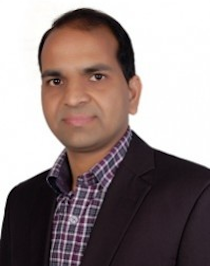Create value ahead of the competition with the Medical Internet of Things (MIoT): Part 1

Bhoopathi Rapolu, Cyient
It probably won’t have escaped your attention that the Internet of Things (IoT) has emerged as something of a phenomenon in the last few years, writes Bhoopathi Rapolu, the head of Analytics for EMEA at Cyient. The concept has become so popular that its impact is being felt across a huge number of industries, and healthcare is no exception.
In fact, it is playing a leading role in this transformative process. Just five years ago, the medical device connectivity market was largely insignificant, but has since caught up rapidly, and is expected to grow at an astounding CAGR of 38% over the next five years by adopting the capabilities of the IoT.
This intense growth owes much to the increasing connectivity of medical devices and personal health tracking devices on the market, which is leading to a huge increase in healthcare big data. Medical equipment and personal health and fitness trackers collect terabytes of data each day, most of which goes unutilised beyond monitoring any potentially catastrophic situations. In the future however, the application of advanced analytics to healthcare big data will have far reaching implications on the industry overall, with the global healthcare analytics market expected to reach $20.8 billion by 2020.
On the whole, most companies that have achieved success thus far have followed fairly common strategies which are becoming increasingly pervasive in industry today. While some of these strategies are clearly apparent in fast-moving, digital and technology-led industries, the healthcare industry seems to be reluctant to adopt them at the outset. In this two-part series, I provide my recommendations for healthcare organizations looking to take full advantage of the IoT, first looking at embracing cloud technologies and making apps and solutions available to all relevant stakeholders.
Look beyond your IT department
Today, the cloud has become the default platform for digital innovation, and the IoT is no exception to this rule. IT departments have often been accused of holding innovation back in the past, yet nowadays it’s hard to find a single fast-growing health app which utilises in-house IT departments and ignores independent cloud platforms. The latter is favoured not just for its scalability and cost advantages, but also for promoting rapid adoption amongst like-minded entrepreneurs which has allowed them to pitch in with their value-added services so that the value of the network within the IoT ecosystem increases exponentially. In our interactions with our customers, we understand that cloud has become default option for consumer facing applications. When you are speaking of security of connectivity and information, cloud is not any less secure than those provided by corporate IT departments.
Democratise your product with the power of IoT
The power of the Internet of Things is dependent on the value of the network from which it originates – and as affirmed by Metcalfe’s Law, ‘the value of a network is proportional to the square of the number of connected users of the system’. How does this apply to IoT solutions? The more users interact with the solution, the more valuable it gets. It is therefore vital that entrepreneurs design their IoT medical equipment, applications or solutions in a way that democratises the big data they generate – thus allowing all the relevant stakeholders to join the party.
They should do this by creating open architectures which allow stakeholders to freely interact with the product in question, permitting them to record the number of people who interact with it and making the information surrounding the use of that equipment completely open. This allows entrepreneurs to open up innovation to numerous stakeholders within healthcare organisations including patients, doctors, service engineers, dealers and so on. By collecting data from these stakeholders within the supply chain, they are able to generate a huge compound value and provide them with insight beyond that which is expected. For example, this data could establish the effect of specific medicines doctors prescribe on patients, or inform patients with additional information on their condition, either in terms of their positive health or severity of a specific disease.
By looking beyond IT departments and democratising products, firms can give themselves a definitive head-start in the race to the Medical Internet of Things. Look out for my second and final part in this series, where I discuss how organisations need to explore remote monitoring, welcome knowledge spillovers and draw secondary/tertiary value from their data to embrace the full power of the IoT.
